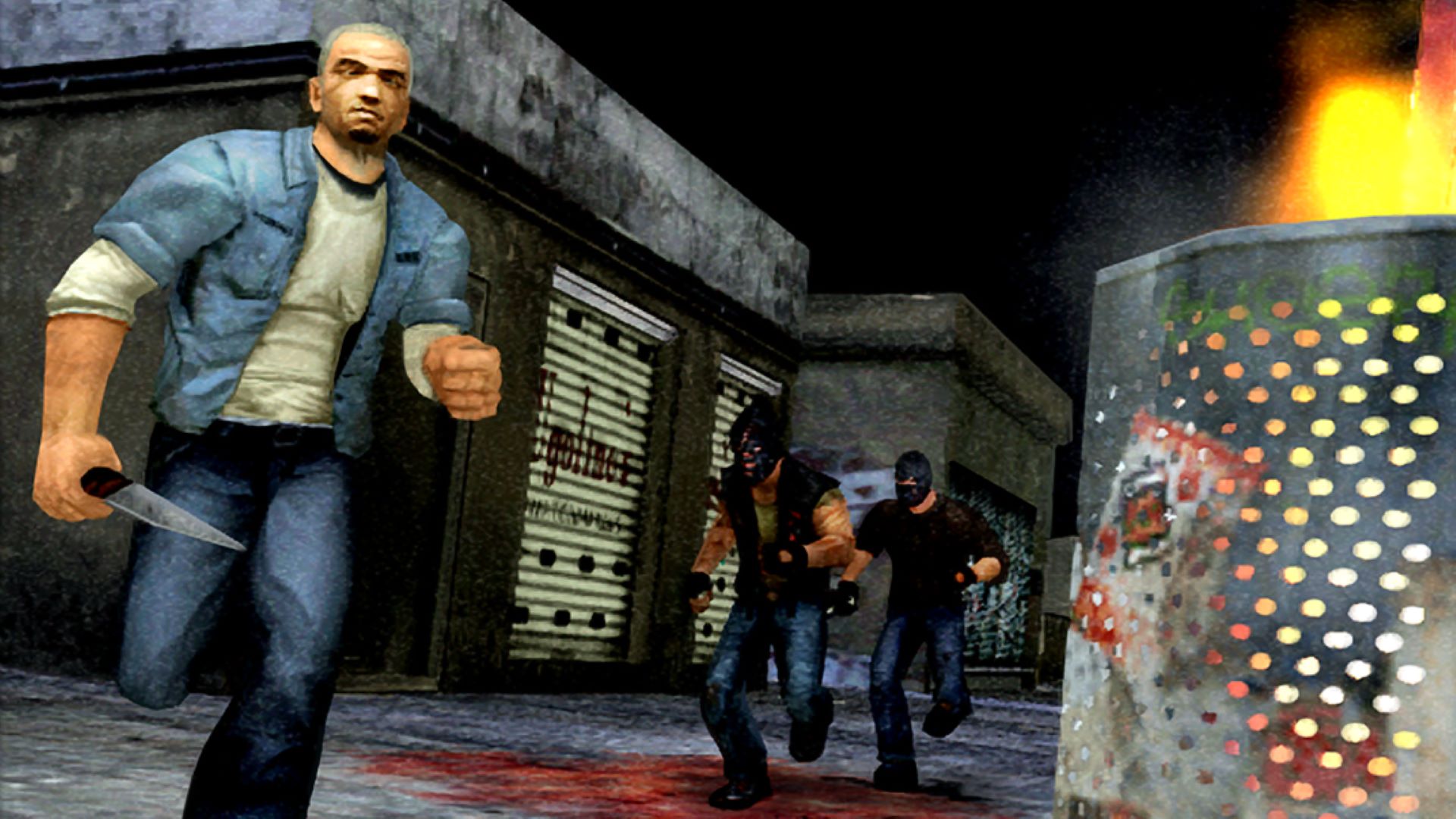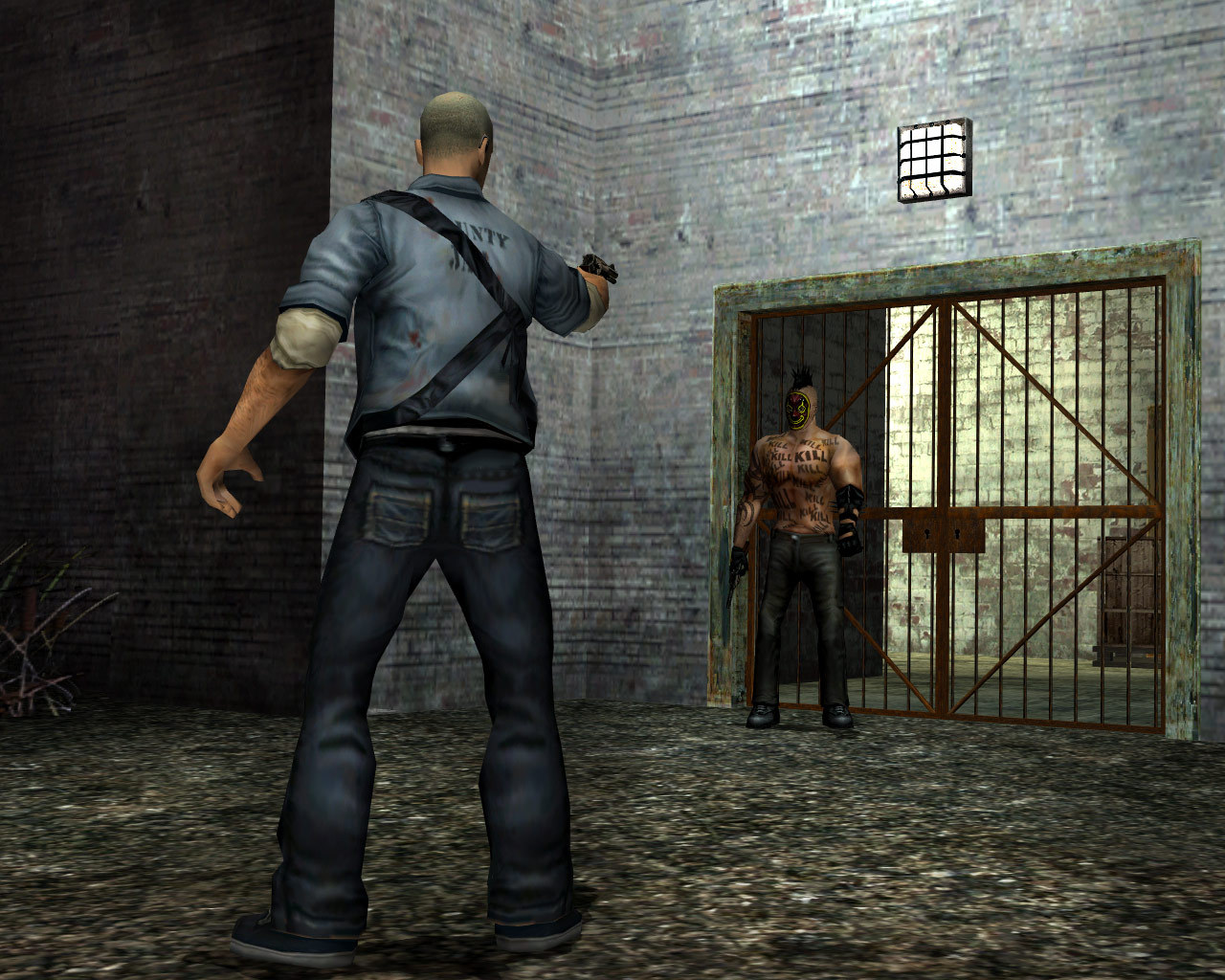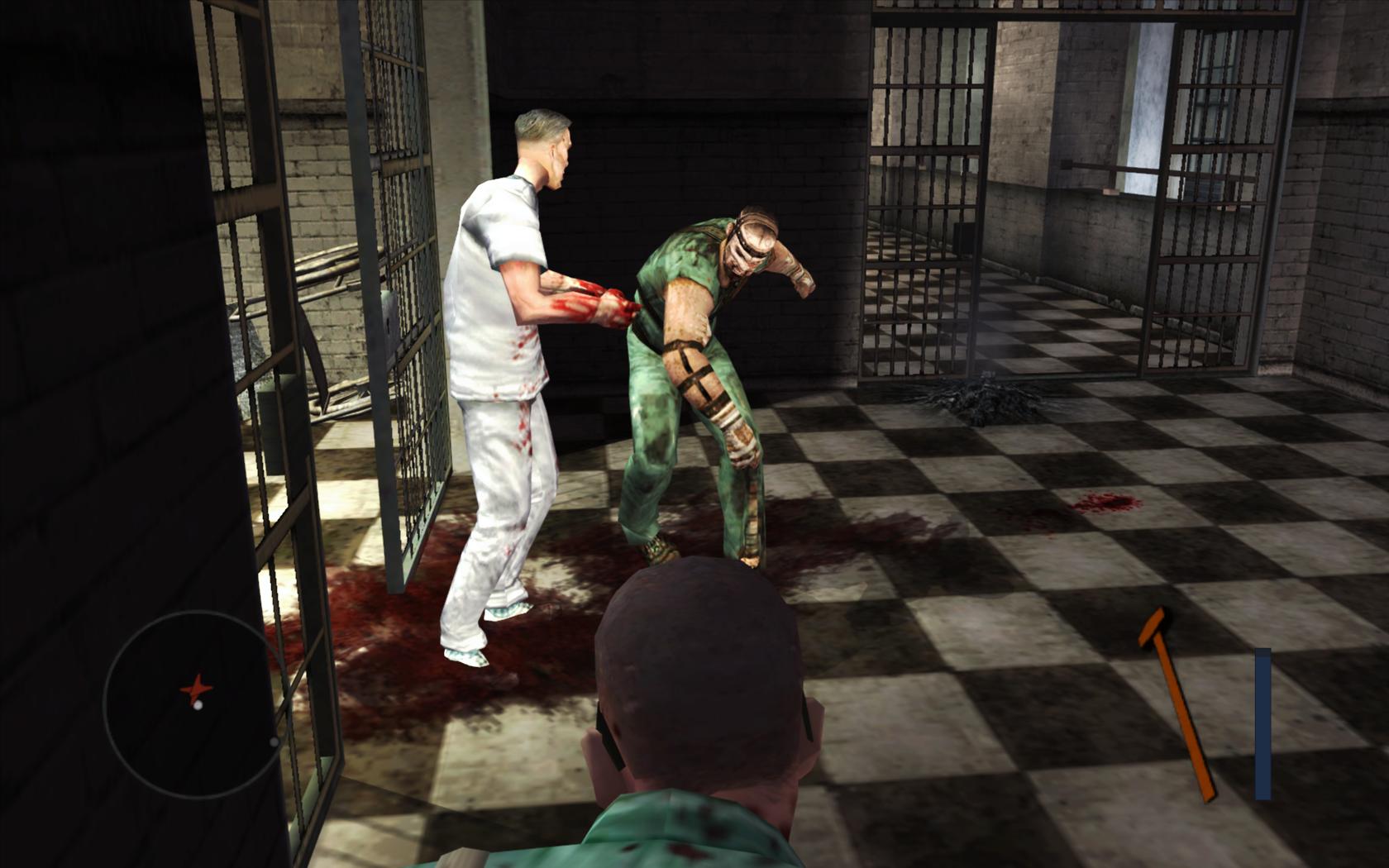It is true that not everyone enjoys blood and guts, but if you do, look no farther than Manhunt. It was published by Rockstar Games and included a third-person stealth horror game. Due to its explicit content and depictions of brutality, the game generated a lot of controversy.
It is simple to write off The Manhunt as a stylish homage to the grindhouse era rather than as a genuine piece of grindhouse entertainment. The game exhibits all the characteristics of the latter despite being produced by a well-known video game studio; its grainy graphics are intended to give the impression that the game’s production value was low.
The games’ plots are distinct because, like many other Rockstar games, they are a part of an anthology series. Both games center on characters with murky pasts who must attempt to escape a dangerous and peculiar situation. The antagonist in every game is someone who has tricked the protagonist but who they still have a lot of control and faith in.
The PlayStation 2 version was first released in November 2003, followed by Microsoft Windows and Xbox in April 2004. For the PlayStation 3 and PlayStation 4, Manhunt was re-released on the PlayStation Network in 2013 and 2016. Manhunt 2 was released on October 29, 2007, in North America, and on October 31, 2008, in the UK.
Prior to explaining further, we have a very minor request.
Please subscribe to our channel if you enjoy our work. It may seem like a tiny gesture to you, but it means a lot to us.
RISE OF THE MANHUNT SERIES

Manhunt managed to create a devout cult following among gamers who had never witnessed a horror game of this caliber. Let’s explore both the games that have permanently etched this game in the mind of gamers:
MANHUNT (2003)

The game begins with a journalist writing about a convict named James Earl Cash, who, despite being executed, is later revealed to be merely drugged. The incident takes place in the year 2003 in Carcer City. Cash awakens to find an anonymous voice giving him orders via an earpiece, who reveals himself to be “The Director.” He is assured his freedom by “The Director” once he gets rid of a group of thugs who are supposed to track him down and are known as the Hunters. While Cash engages them, he would be filmed by CCTV in designated places surrounding Carcer City.
“The Hood,” a gang that has both thugs and malicious police officers in their ranks, becomes the first victims of Cash while they are busy monitoring a deserted area of the city. The “Cerberus,” the unit in charge of the Director’s security, kidnaps him and takes him to a different location. He makes his way through hordes of criminals across various locations, including a Neo-Nazi group of criminals known as the “Skinz,” a gang known as the Wardogs who have abducted Cash’s family to lure him, and various other groups of wicked criminals.
The Director finally deceives Cash and attempts to murder him as part of the film’s denouement after ordering the murders of his family. Cash, on the other hand, manages to get out of the trap after vowing vengeance on the man responsible for the death of his family.
Cash then encounters the remaining Wardogs, led by Ramirez, the guy in charge of all the Director’s operations. He eventually manages to survive after getting rid of Ramirez alongside his team. The journalist saves him, and from her, he learns that the Director is none other than Lionel Starkweather, a snuff film producer. The journalist has sufficient evidence to convict Starkweather, but she needs Cash’s help to get to her apartment.
Meanwhile, Starkweather manipulates Gary Schaffer, the dishonest police chief, into deploying his men to kill Cash and the journalist, yet they escape. Cash tells the journalist to take the proof and escape the city before he goes after Starkweather. After being hunted by police over the metro and streets, Cash is almost killed in a railroad yard. Cash is saved by the Cerberus, who kills the officers and transports him to Starkweather’s residence, where he will be executed. The Cerberus is distracted when Piggsy, a madman with a chainsaw, bursts out suddenly.
Cash finds his way to the top floors of the building, where he meets Piggsy. Cash uses stealth attacks against Piggsy because he can’t fight him directly, so he tricks him into walking on a grate that collapses under his weight, allowing Cash to kill him with his chainsaw.
After slaughtering the final Cerberus, Cash visits Starkweather in his office and mutilates him with the acquired chainsaw. The media and police later arrive at the building after the journalist reports about Starkweather’s operations and police collaboration, ending in Schaffer’s criminal indictment for corruption. Cash, on the other hand, has disappeared.
The game has twenty stages, referred to as “scenes,” and four unlockable extra scenes. Players survive by assassinating opposing gang members, sometimes with guns, but mainly by discreetly killing them. Players are given one to five stars depending upon their performance at the end of each scene. Unlockable stuff is only accessible until a player has at least three stars on a particular number of levels.
On “Fetish,” the standard difficulty, players may receive just four stars: one for finishing the scene in a set period of time and one to three stars for the savagery of the killings carried out throughout the scene. On hard difficulty dubbed “Hardcore,” gamers are given one to five stars for haste, up to three stars for violence, and a star for merely finishing the sequence.
The player must carry out a certain number of cruel killings throughout the completion of every scenario to earn the maximum number of stars; one on one combat doesn’t give stars. Players must pursue a hunter from their back, unseen, to carry out executions. Each scene has a lot of “dark areas” to help with this. Enemies can’t see what’s going on in the darkness.
Players can appear from behind the shadows of the hunter and assassinate them once the hunter has finished inspecting the area and is heading away. The executions in the game are divided into three stages, each of which is more brutal and gruesome than the previous: “hasty” killings are rapid and not particularly bloody, “violent” executions are gorier, and “gruesome” executions are ruthless killings.
Players can employ several weapons throughout the game, ranging from daily items to various bladed objects. Firearms become available over the course of the game. Players’ health depletes as they take damage; the player may restore health by using painkillers found throughout each scenario. Players have access to a stamina gauge, which diminishes while they run but autonomously replenishes while they remain idle.
Manhunt also incorporates the use of PlayStation 2’s auxiliary USB speaker and the Xbox Live speaker feature in their individual iterations of the game. When a device like this is installed, players may utilize their own voice to deceive opponents in the game. This feature aids in the game’s stealth mechanics since players need to avoid making noises like coughing, which may draw the attention of enemies nearby.
MANHUNT 2 (2007)

The game begins with a strong thunderstorm striking the Dixmor Asylum for the Criminally Insane in 2007, knocking out the asylum’s security system and allowing inmates to walk freely around the hallways. Daniel Lamb and Leo Kasper are two such convicts. Daniel is bewildered and partially amnesic, with no recollection of how or why he arrived in Dixmor. They escape the facility with Leo’s help and make their way to the wreckage of Daniel’s former house. Inside, Daniel finds medicine that Leo claims he kept there for himself in case he forgot his background.
The drug lets him clear his mind a little, and he starts remembering bits and pieces of his previous existence. He and Leo then set out to uncover Daniel’s previous mysteries, all the while being followed by bounty hunters and agents of a mysterious organization known as “The Project.” As the story progresses, Daniel discovers that he was formerly a top scientist working for the “Pickman Project,” a government-funded weapons program that included brainwashing and mind control techniques.
The Project’s purpose was to produce the ideal assassin, so they created the “Pickman Bridge,” a brain implant that could be triggered on command and included the personality and abilities of a professional hitman. The two identities may theoretically coexist in the same mind, utterly oblivious of each other. The plan was for the assassin to be remotely activated, carry out his objective, and then return to his original self, who would have no recollection of what he had just done and hence would be impervious to interrogation.
Daniel and Leo set out to find Dr. Whyte, a Project researcher and one of Daniel’s coworkers, as they piece together the evidence and begin to recall more of his background. They are ambushed and sedated before they can get to her. Daniel awakens in a room with Whyte, who informs him of the reality. Daniel offered himself to test the Pickman Bridge six years ago, when the Project’s funding was threatened, to clear his family’s debts and provide a financially stable future.
However, shortly after the Bridge was implanted, it malfunctioned, leading Daniel to develop dissociative identity disorder and allowing him to speak directly with the implanted personality he views as a real person – Leo Kasper. According to Whyte, Leo is extremely unstable and has been working against Daniel from the start.
Whyte reveals that after the implant malfunctioned, Leo’s personality took over, suppressing Daniel’s, and he went on a killing spree across the city, killing police officers and Project members, destroying the project’s records of Daniel and himself, and finally making his way to Daniel’s home and murdering his wife. Daniel’s hold on reality had to be weakened to the point where Leo could take absolute control of his mind.
After the murder, the Project apprehended Daniel/Leo, deleted his memory, set fire to his home, and confined him to Dixmor, where they had been trying unsuccessfully to research the effects of the implant and heal the harm. Daniel decides to eliminate Leo once and for all after discovering the truth. He falls into a deep hypnotic trance and fights Leo in his head. He can finally let go of his remorse over his wife’s murder, allowing him to “kill” Leo and reclaim power. Daniel then wakes up on a lonesome road; his memories are wiped clean.
He’s clutching an envelope that introduces himself as “David Joiner,” gives him a new address of 526 Hope Street, Apartment B, and wishes him success. Before going away, Daniel pauses for a moment. On the Hard mode, or if the player kills too many bystanders during the game, an alternate ending is unlocked, with the last fight being played from Leo’s perspective.
Daniel’s individuality is effectively destroyed, and he awakens in control of his mind and body. Whyte asks Daniel if he’s okay, thinking she’s talking to him, to which he responds that he’s eager to get back to work on the Bridge. Daniel notices Leo’s reflection in the mirror when he looks in the mirror.
Like in the original game, the core gameplay element is stealth execution, in which the player character must approach an adversary from behind, unseen, and kill them. In a third-person perspective, players take on the role of Daniel Lamb while at times controlling the evil Leo Kasper. Both have comparable controls, despite their differences in look and behavior.
Level 1 (Hasty) killings are rapid and not very bloody, Level 2 (Violent) executions are much more gruesome, and Level 3 (Gruesome) executions are entirely out of control. The player chooses which level to utilize once they’ve latched onto an adversary; the lock-on reticule changes color over time to show the respective levels: white (level 1), yellow (level 2), and eventually red (level 3).
The stealth mechanics in Manhunt 2 have been improved over the previous game. For example, gamers now have additional options for killing adversaries. Players can now employ firearms for executions and the three degrees of execution per weapon. “Environmental executions,” in which the player may use components of the game world to destroy opponents, and “jump executions,” in which players can strike adversaries from above by leaping from a ledge, are two further enhancements to the execution system.
In contrast to the previous edition, opponent AI has been increased in Manhunt 2, with certain foes being more alert than others. Aside from stealth, different modes of fighting are included. Suppose an adversary explores the area while the player lurks in the shadows. In that case, the player may have to imitate a combination of buttons or actions to control the character’s breathing and keep him quiet and undiscovered. Another new feature is the ability to shatter lights to generate more shadow pockets.
The game’s audio is exceptionally significant. Running, opening doors, stepping on gravel and cornstalks, or accidentally knocking things over can alert the opponent to the player’s location. Sound sources such as machinery, on the other hand, can be utilized to mask the noise made by the player. Painkillers can be discovered throughout the game if the player’s health is low. When confronted by an attacker, the player can flee, hide, or fight back in hand-to-hand combat.
FALL OF THE MANHUNT FRANCHISE

There are several reasons why Rockstar may opt to abandon the brand. Most likely, the trouble it would have to go through to make another Manhunt isn’t worth it. And, for a corporation saturated with profits from Shark Cards, any potential PR repercussions might not be worth it. Furthermore, the second Manhunt game was not that enjoyable.
The first game wasn’t the game-changer that previous Rockstar games like Grand Theft Auto and Red Dead Redemption were, and the sequel only went backward. It took away a lot of what made the first game so engaging by introducing firearms. Players could no longer stealth their way through places teeming with opponents to kill them. They could now fight back more readily, reducing the stress. The second plot also takes a step back, presenting a troubling look at mental illness that hasn’t aged well and wouldn’t work today.
Even if the original two games were both commercial successes with minor criticism, it’s challenging to picture Rockstar returning to Manhunt. Over the last few years, the firm has shifted its focus from linear games to live-service titles. When Grand Theft Auto Online first came out, it swept the globe by storm, and Rockstar is slowly attempting to do the same with Red Dead Online. Despite everything it accomplished, Manhunt is unlikely to fit in with the current trend.
FUTURE OF THE MANHUNT FRANCHISE

It is implausible for Rockstar to venture into a third sequel for the Manhunt series considering the backlash and controversy it faced with the second edition of the game. Because of its initial AO classification, Manhunt 2 was practically prohibited in the United States. Rockstar’s decision to compromise the game’s vision to lower the rating certainly left a sour taste in the developer’s mouth.
Even when Rockstar reduced the game’s most extreme types of violence, it had difficulty releasing it in the United Kingdom, where it was banned for a year after its debut in the United States. To make matters worse, hackers could remove the blurring effect from executions just days after the game’s US release, restoring Rockstar’s original, horrific vision. Just a month after the game’s release in the United States, a group of senators led by Hillary Clinton wrote to the ESRB, requesting that the game’s AO rating be reinstated.
Furthermore, horror games like Manhunt have lost their place over the years, and players have developed a bias toward open-world games compared to linear games from yesteryears. So, it doesn’t make sense for Rockstar to invest in such a game anymore. On a disappointing note, fans of the franchise will have to satiate themselves with the previous versions of the game because a third installment isn’t going to happen.
